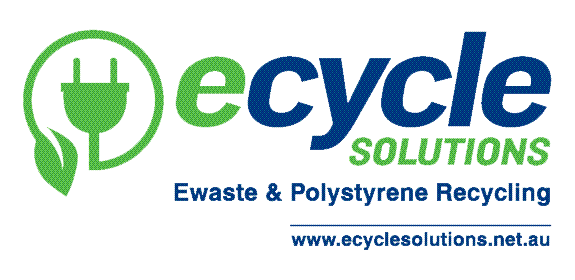Brought to you by
Ecycle Solutions provides the public with free recycling drop-off points for TVs, computers, computer accessories, and printers. Find out more.
Televisions can be recycled, but not in your household recycling bin. There are free recycling collection points for old and broken televisions across Australia.
Businesses and workplaces with large quantities of televisions to recycle can use the National Television and Computer Recycling Scheme for free. For more information, visit Business Recycling.
The National Television and Computer Recycling Scheme
Electronic waste or e-waste, which includes televisions, is the fastest growing waste stream in Australia. When you recycle your old or broken television, the valuable metals, plastics and glass in the television are recovered and used to make something new. Televisions can also contain potentially dangerous materials that put our environment at risk when they are dumped or sent to landfills.
To tackle the problem of e-waste, the Australian Government created the National Television and Computer Recycling Scheme. Every company that makes and/or imports televisions and computers into Australia is required to pay for the end-of-life recycling of these products. That means, you can drop-off your television for recycling for free.
There are five organisations that recycle televisions, computers, and computer accessories under the scheme:
- Ecycle Solutions
- Ecocycle Pty Ltd
- TechCollect
- Sustainable Product Stewards Pty Ltd
- The Activ Group Solutions Pty Ltd (Ecoactiv)
How to recycle televisions at work
There are some recycling organisations that offer national collection services for commercial quantities of televisions. To find a commercial television recycling service for your workplace or business, visit Business Recycling.
Why should I recycle my television?
Every year Australians purchase millions of new televisions. When the older models are thrown away, they are sent to landfill and the materials used to make the products are wasted. By recycling your old or broken television, you will divert waste from landfill and make sure the materials in the television such as metals, precious metals, plastics and glass are recycled.
Recycling televisions also keeps toxic materials out of our environment. Older televisions that contain cathode ray tubes (CRTs) can contain up to 4 kg of lead and other toxic materials such as mercury, cadmium and arsenic. Lead is a cumulative poison that can contaminate groundwater and have harmful effects on human and animal health.
Some states such as the Australian Capital Territory, South Australia and Victoria have banned electronic products from landfill.
What happens to my television when I recycle it?
When televisions are collected for recycling, they are first inspected to see if they have any working components that can be reused. To be recycled, the televisions are then broken down into their many different components.
- Circuit boards are shredded down to a fine powder and separated into plastics and precious metals. This material can be reformed into a range of products.
- Plastic casings are shredded and melted down for use in new products.
- Scrap metals are typically melted down to form new metal-based components.
Cathode ray tube (CRT) glass contains a high concentration of lead. This means it can't go back into the normal glass recovery process like glass bottles. CRT glass is typically crushed and cleaned. Some CRT glass is used in manufacturing new television and computer monitors, but the move to LCD and plasma televisions means that new technologies and processes are being found to reuse this material.


